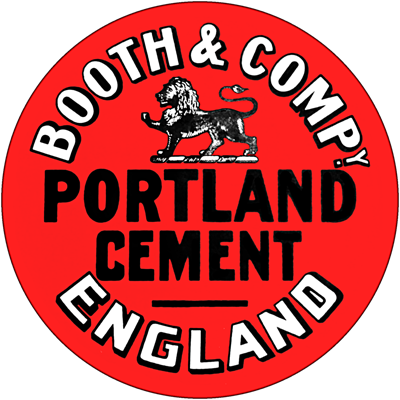
Booths Brand.
Location:
- Grid reference: TQ723667
- x=572260
- y=166700
- 51°22'24"N; 0°28'22"E
- Civil Parish: City of Rochester, Kent
Clinker manufacture operational: 1852-1901: 1919-1921
Approximate total clinker production: 580,000 tonnes
Raw materials:
- Upper Chalk (Lewes Nodular Chalk Formation: 88-90 Ma) from 572500,166500
- Medway Alluvial Clay
Ownership:
- 1852-1866 Edwin Hollick
- 1866-1900 Booth and Co. Ltd
- 1900-1921 APCM (Blue Circle)
Sometimes called Booth’s Works. Six bottle kilns (150 t/week) were in use in 1869, extended to eight before 1880. In 1880, six chamber kilns (160 t/week) were installed. Additional 30 t/week chamber kilns were installed: two in 1888, three in 1893 and three in 1898. In 1899, three Schneider kilns were added, set up to burn surplus dried slurry. The bottle kilns were decommissioned by then. This left capacity at 400 t/week from chamber kilns and 240 t/week from Schneider kilns. The plant was promptly closed at the APCM takeover, but the chamber kilns were revived in 1920, still rated at 400 t/week. The plant was described in detail in the APCM 1924 schedule. Booth’s acquired the Cuxton plant on the opposite bank in the 1890s. The plant primarily used water transportation, but could also ferry product over the river to the Cuxton site, from which it could be despatched by rail. After closure, the site was cleared and remained waste until recently when it was developed for housing. The quarry is partially waste and partly under housing.
Power supply
The plant was direct-driven by one 300 HP double expansion steam engine.
Rawmills
There was one rough washmill fed with raw chalk and clay, and one finishing washmill.
No rotary kilns were installed.
Sources::
- Primary Sources:
- Greenhithe Archive
- APCM 1924 schedule
- Ordnance Survey 1:2500 mapping
- BGS mapping and monographs
- Confirmatory Sources: